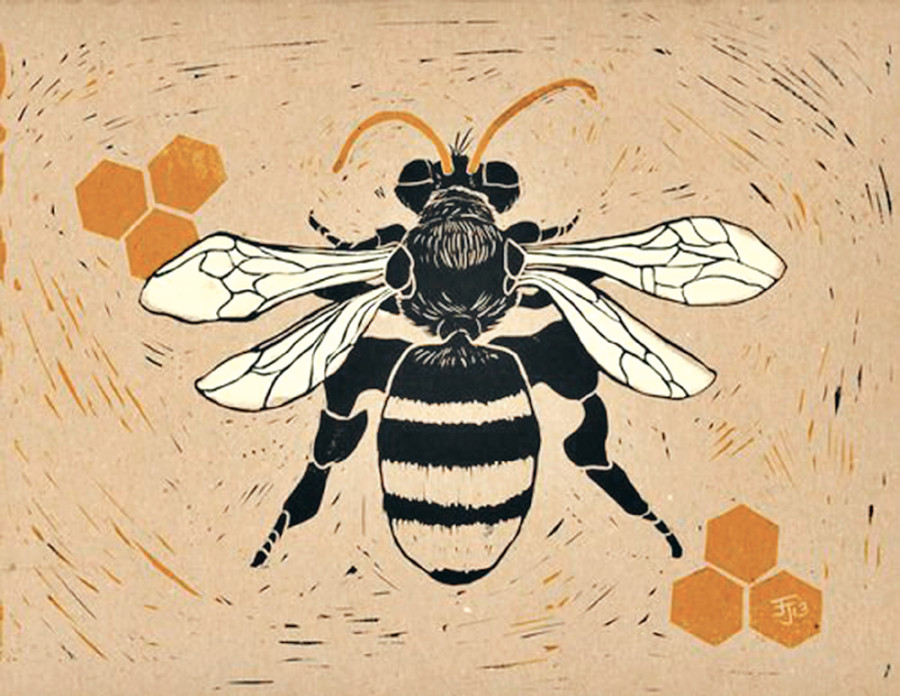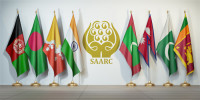Opinion
Honey is not everything
Nepali bee-keepers have limited knowledge about international quality requirements
Nanu Jha
Honey is a highly nutritious and natural sweet substance produced by honey bees from the nectar of plants or from the secretions of plants or the excretions of plant-sucking insects. As per the government, standard honey should be free from any inedible foreign matters and it should be in pure form. It is used to cure coughs, colds, wounds, cuts, diarrhoea and other diseases. It is also an important ingredient in many traditional medicines. In recent years, scientific evidence has confirmed the antibiotic and healing properties of honey. Products containing honey include honey vinegar, beer, cosmetics, shampoo, lipstick, perfume, cream and soap.
Demand for honey is increasing in the domestic, regional and international markets while production is declining in the European Union (EU) and the Americas as a result of bee diseases and pests. The EU, Japan and the US are the major import markets for honey. The EU is the largest market for honey. It imported 148,000 tonnes of honey worth $385 million in 2010. The global market for honey is growing, and there is a large potential market for honey produced in the Hindu Kush Himalayan region in the EU and other developed countries.
Quality standards, good practice guidelines and legislative requirements keep sub-standard honey out of the market to safeguard consumer health. The environmental contaminants of honey are pesticides and heavy metals while the main contaminants of honey from beekeeping practices are the pesticides and antibiotics used to control bee pests and diseases. The main global standards that apply to the import and export of honey are contained in the Codex Alimentarius—a collection of internationally recognised standards, codes of practice, guidelines, and other recommendations relating to foods, food production, and food safety. Both the Codex Alimentarius and the EU set strict limits on the residues of veterinary drugs, pesticides and heavy metals in honey and demand that exporting countries have systems in place to monitor residues. The EU requires monitoring for the presence of residues throughout production, collection and processing.
Nepali honey
Nepal has one indigenous species Apis cerana and another Italian honey bee species Apis mellifera which was introduced into the country in 1990. Records show that there are around 170,000 bee hives of different species and varieties across the country and honey production amounts to about 1,650 tonnes annually. These bees feed on the area’s great diversity of flowering plants. In Nepal, honey production is becoming increasingly popular. Bee keeping has been identified as a potential sector for increasing incomes and employment opportunities, especially for poor, landless, under-privileged and low-income groups. Nepal is a small producer of honey in the world and accounts for only 0.01 percent of global production. It has a potential to produce 10,000 tonnes annually, but is hampered by low productivity compared to major producers in the world. Nepal exports around four tonnes of honey for which it gets a good price. But domestic demand exceeds output, and it imports about 300 tonnes annually.
The government has laid emphasis on promoting and improving honey production and provides subsidised materials and technical support. In 1968, it began providing training and technical assistance through the Department of Cottage Industry and Remote Area Development Committee. Since the country has an abundance of natural flora and fauna and appropriate climatic conditions, Nepali honey has a unique flavour. The consumption of honey is increasing in the country. Organic honey can be produced here if good beekeeping practices (GBP) are followed as per the standards determined by the Codex Alimentarius. The value chain actors involved in beekeeping are beehive suppliers, equipment sellers, collectors/businessmen, processors, wholesalers, retailers, exporters, financial institutions and technical services providers.
Challenges galore
Honey producers, processors and exporters face many challenges in meeting consumer demand and the laws of the developed countries. High quality honey is required in international trade and lower standards apply to honey sold in the domestic market. Limited awareness among beekeepers about good beekeeping practices and quality requirements and legislation difficulties has made it difficult for honey traders to buy sufficient quantities from small producers scattered across mountain areas. The main challenge before the organic honey trade is the expense and practicalities of getting organic certification. Although some producers can meet organic standards, the complex documentation requirements present a large obstacle. Most beekeepers and honey entrepreneurs in Nepal are small-scale operators and the low returns from organic honey discourage them from obtaining certification.
The other main challenge is that the EU defines honey as that produced only by the European honey bee Apis mellifera, thus excluding wild honey from indigenous bee species. It would be helpful if international and national authorities establish and revise species-wise technical requirements and quality parameters for honey gathered from wild honey bees and develop common standards, quality parameters and a trademark for organic products. It is also necessary to organise beekeepers and honey hunters into groups to establish honey collection centres to make large volumes of honey available in one place.
National residue monitoring plans serve as the foundation for certifying the safety of a country’s food products, especially for export purposes. Such plans for honey specify the means and the framework for monitoring residues of drugs, pesticides and heavy metals. Quality assurance and residue monitoring requires well-equipped and accredited laboratories. The Department of Food Technology and Quality Control has planned to extend the scope in contamination including pesticides, veterinary drug residue (VDR) and other food additives. It must be well-equipped and also have sufficient resources and skilled persons to implement the programme efficiently so that Nepali honey can meet international quality standards and be exported to the developed countries.
Jha is an agricultural economist




 10.12°C Kathmandu
10.12°C Kathmandu










